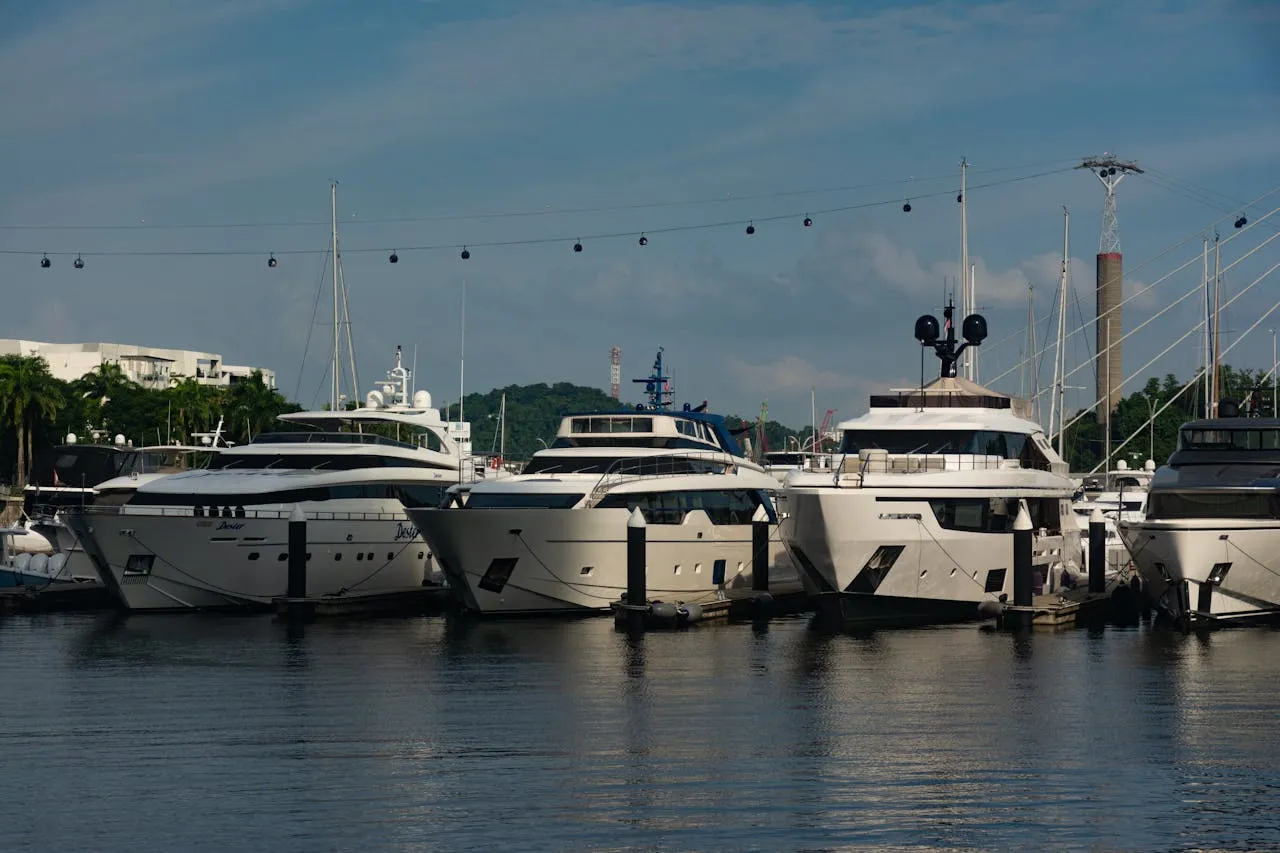07 August 2025
What is the Best Way to Avoid Running Aground With a Yacht?
In most inland or coastal waterways, the risk of a yacht running aground is always present. Like many common boating errors, grounding can actually be effectively prevented through certain methods. So, what is the best way to avoid running aground with a yacht? The key lies in enhancing situational awareness, and the primary means of achieving this is to maintain good lookout habits.
Even if you are extremely cautious during operation, the possibility of grounding cannot be completely ruled out. However, following some basic recommendations can significantly reduce the likelihood of it occurring.

The Five Key Factors for Avoiding Grounding
To effectively avoid yacht grounding, we recommend focusing on the following aspects:
Visibility of the water surface and underwater conditions in the current waterway
The presence of other vessels and their routes in the vicinity
The location and direction of navigation channels and markers
The presence of shoals or underwater obstacles near the destination
Your vessel's braking distance and manoeuvrability
These five factors collectively determine your ability to promptly assess and avoid shoals in complex waters, particularly in unfamiliar areas.
What is the Best Way to Avoid Running Aground With a Yacht?
Below are the 6 best methods to avoid yacht grounding compiled by Yachttrading:
1. Maintain Proper Lookout
Maintaining a good lookout is one of the most basic and practical safety rules when navigating in any waterway. It helps you avoid obstacles and serves as the first line of defence against grounding.
In some areas with clear water, you may be able to identify shallow water or seaweed beds by changes in water colour. In waters with low visibility, although underwater conditions are difficult to see, changes in waves often provide important clues, such as abnormal wave peaks or water flow layers.
Of course, these observation methods are greatly influenced by factors such as weather, lighting, and water quality—a water surface that was clear and transparent yesterday may be murky today due to a storm. Therefore, relying solely on visual observation is insufficient, but it is a highly effective supplementary method for preventing a yacht from running aground.
2. Observe the Routes of Other Vessels
The routes taken by other vessels can provide valuable reference. For example, if you are piloting a small yacht and a deeper-draught sailboat successfully passes through ahead of you, that channel is likely safe for you as well.
However, please remember that vessels have significant variations in draught depth. An area navigable by a smaller vessel does not necessarily mean your yacht can pass through safely. Therefore, when making judgments, you must consider your own yacht's draught depth.
3. Utilise Nautical Charts and Navigation Equipment
Whether you are an experienced captain or a novice yachtsman, mastering the basic operations of nautical charts and chart plotters is an essential skill to avoid grounding. Through paper or electronic charts, you can pre-emptively understand the distribution of channels, underwater obstacles, and shallow water areas.
Before setting sail, especially when entering unfamiliar waters for the first time, it is essential to thoroughly review the topography and water depth information of the target area. During the voyage, continuously monitor the data from navigation equipment to ensure the reasonableness and safety of the navigation path.
4. Regularly Update Your Nautical Chart Information
It is important to note that even if a nautical chart indicates sufficient water depth in a particular area, it does not guarantee absolute safety. Factors such as shifting sandbars, silting of waterways, or changes in the underwater terrain can render existing nautical charts obsolete. This is particularly evident in muddy or sandy-bottomed waters following strong winds or high tides.
Therefore, keeping nautical charts and chart plotter data up to date is crucial. Many mobile marine navigation apps now support downloading the latest nautical charts, and some even integrate actual observation data uploaded by other crew members, which can be used to verify the accuracy of the charts.
5. Tidal Factors
If you are navigating in tidal waters, it is essential to check the tidal conditions for the day in advance. The water depths marked on charts are typically based on the ‘Mean Low Water Level’ (MLW), but actual water depths may vary due to daily or monthly tidal changes.
Additionally, strong winds and changes in air pressure can also affect tidal levels. Understanding these variables can help you more accurately assess water depths and avoid misjudgments that could lead to grounding.
6. Familiarise Yourself With Your Yacht
When you suspect shallow water ahead, your first reaction should be to slow down. Slowing down reduces braking distance and minimises the risk of damage to the hull or propulsion system in the event of grounding. This requires a thorough understanding of your yacht's braking response and manoeuvrability at different speeds. When manoeuvring is necessary, the faster you assess the situation and act, the lighter the consequences are likely to be.
No matter how experienced you are, yacht groundings can sometimes be unavoidable. Especially when we sail yachts to explore uncharted waters, this is part of the joy of sailing. What’s important is to prepare thoroughly in advance, maintain high alertness during navigation, understand your yacht’s performance, and use nautical charts and electronic navigation tools in combination. The risk of grounding will naturally be minimised.
Ultimately, the best way to avoid running aground is to enhance your situational awareness and use a combination of tools to assess and respond to the situation.
 Report
ReportNetizen comment
Comments

Leave the comment
Relevant Recommendation
Yacht Guide
Most Recommended


